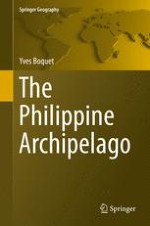2017 | Buch
Über dieses Buch
This book presents an updated view of the Philippines, focusing on thematic issues rather than a description region by region. Topics include typhoons, population growth, economic difficulties, agrarian reform, migration as an economic strategy, the growth of Manila, the Muslim question in Mindanao, the South China Sea tensions with China and the challenges of risk, vulnerability and sustainable development.
Anzeige
